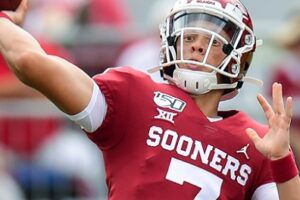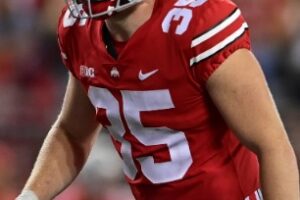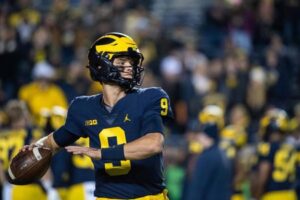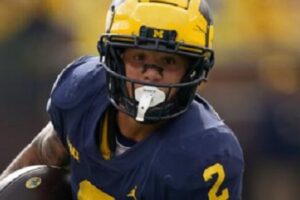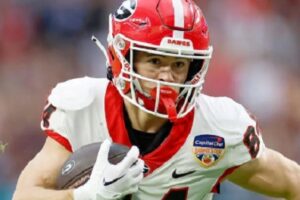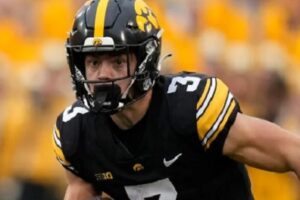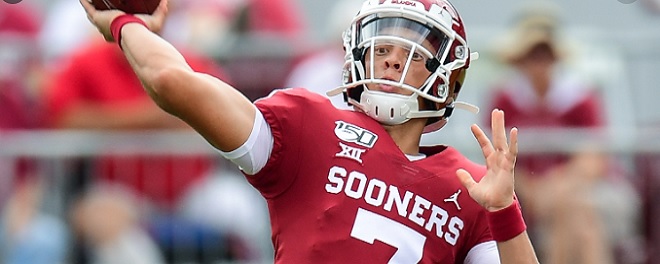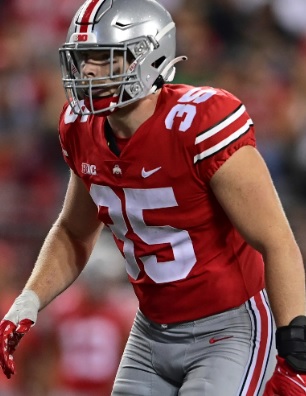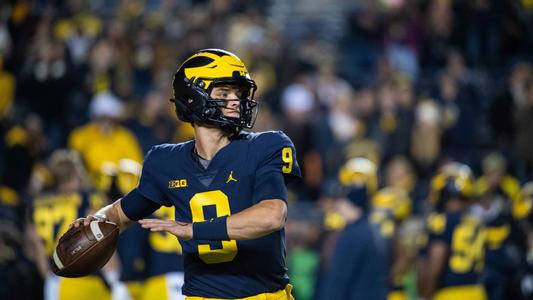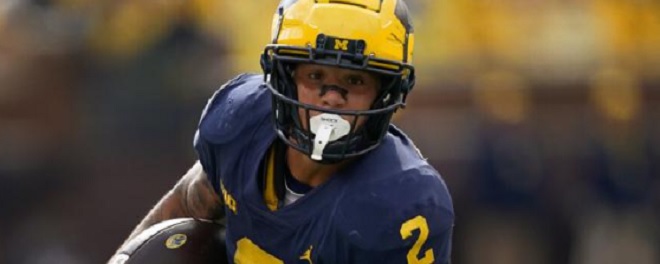By Charlie Campbell.
Send Charlie an e-mail here: [email protected]
Follow Charlie on Twitter @draftcampbell for updates.
This page was last updated April 4, 2014. Follow me @walterfootball for updates.
Position Review: Cornerbacks
Cornerback Class
Early-round talent: B+
Mid-round: B
Late-round: B-
Overall grade: B+
2012 prospects vs 2013
Justin Gilbert = DeMarcus Milliner
Darqueze Dennard > D.J. Hayden
Kyle Fuller < Desmond Trufant
Bradley Roby < Xavier Rhodes
Jason Verrett > Darius Slay
Keith McGill < Johnthan Banks
Marcus Roberson > David Amerson
Lamarcus Joyner < Jamar Taylor
This year’s draft class features a solid group of cornerbacks, and this group is slightly better than last year’s class. The 2014 class should match last year’s total of four first-round picks and could easily surpass it. The depth is also better in the 2014 NFL Draft as some quality corner prospects should be available on the third day.
If you were to mix the classes, Gilbert and Milliner are equal as prospects. Dennard is a better prospect than D.J. Hayden – even though the Raiders were prepared to take Hayden at No. 3, other teams had him as a second-rounder. Dennard is a better prospect than Hayden was a year ago.
Fuller and Roby would be behind Rhodes and Trufant, but that group is pretty equal. Verrett was a better player in college than Slay. McGill would go behind Banks. Roberson would go between Banks and Amerson with Joyner going behind Taylor.
Safest Pick: Justin Gilbert, Oklahoma State

As a prospect, Gilbert is extremely well-rounded. He is a gritty player who has size, speed, ball skills and athleticism. Gilbert is a good cover corner who can play off-man and press-man coverage. He has the speed to run with fast receivers and the size to handle big wide outs. Gilbert also is very capable of taking the ball away from the opposition. For the NFL, he looks like a safe pick to develop into a good starter and could be a No. 1 corner.
Biggest Bust Potential: Bradley Roby, Ohio State

This was a tough call, I could make an argument for any of these corners becoming a bust with the exception of Gilbert and Kyle Fuller. Dennard struggles to play off-man coverage; Roby is a gambler who can get burned; Verrett is undersized; McGill is inconsistent and raw; Roberson has had injury issues; Joyner is lacking size and speed.
Since I have to pick one, I’ll go with Roby. I can’t get his bad tape out of my mind. Roby was torched repeatedly in 2013 as Wisconsin, California and Northwestern burned him. He also has some off-the-field issues in college. Roby has a great skill set, but he has to be coached up to fix some bad habits. If Roby can’t learn those coaching points, he could be a bust in the NFL.
Cornerback Rankings by Attributes
Off-Man-Coverage Ability:
NFL prototype: Darrelle Revis, Jets
- Justin Gilbert
- Marcus Roberson
- Kyle Fuller
- Jason Verrett
- Lamarcus Joyner
- Bradley Roby
- Darqueze Dennard
- Keith McGill
Recap: Going off the opinion of Jon Gruden, who is now a leading indicator of opinion around the league, the most important two positions on a defense are an elite pass-rusher off the edge and a shutdown cornerback. The NFL is driven by passing, and a shutdown corner can limit the opposition’s ability to score points by taking the best receiver away from a quarterback. Teams throughout the league are searching hard for that kind of cornerback talent. Playing off-man coverage is more challenging than press-man coverage because off man requires loose hips and agility to turn quickly. NFL offenses use lots of bunch formations to force cornerbacks into off-man coverage whether the defenders want to play it or not.
Gilbert is hands down the best at offman in this draft class. He is excellent in this kind of coverage. Gilbert can flip his hips to run and is very smooth. He runs the route of the receiver and doesn’t allow separation. Gilbert really improved this as a senior. This ability really sets him apart from the rest of the pack.
Roberson looked better in off-man coverage during his sophomore season than he did as a junior; injuries also killed his 2013 season. Roberson was excellent in off man as a sophomore and freshman starter in the SEC. He is very fluid and does a great job of blanketing receivers.
Fuller, Verrett and Joyner are very good in off-man coverage. All three enter the NFL with that being a strength. Fuller and Verrett are better at not allowing separation than Joyner, so they’re ranked higher.
Roby played more press man and zone in 2013. He’ll need some development in his off-man skills, but he has the agility and athleticism to become good at it.
Dennard was a press-man corner for the Spartans, and his inability to play offman coverage was exposed at the Combine. He has to get more fluid. Teams will target that early in this career, and if he can learn that technique, he’ll be a complete corner. It really is the only significant hole in his game.
Likewise, McGill was more of a press-man player.
Zone Corner:
NFL prototype: Charles Tillman, Bears
- Jason Verrett
- Darqueze Dennard
- Justin Gilbert
- Kyle Fuller
- Bradley Roby
- Keith McGill
- Lamarcus Joyner
- Marcus Roberson
Recap: Many teams mix man and zone coverage, so a corner who can excel in both is very valuable. Verrett was excellent in zone for TCU. He covers his territory, stays disciplined and understands the concepts. Verrett is also adept at disguising his coverage, thus he’s ranked first.
Dennard and Gilbert are very good zone corners. Each uses his size to help cover receivers who run into his area. Both would fit well into NFL zone schemes, but they’ll be drafted for their ability to play man.
Fuller is an asset in zone coverage. He covers a lot of ground and is instinctive to get himself in position to make plays. Teams that like to vary their coverage will like Fuller a lot.
Roby played more zone later in his junior season and did well. He is fast to cover ground and has instincts. McGill is a nice zone corner and would work well in a Tampa 2 system. Joyner is reliable in zone coverage as well.
Roberson didn’t play much zone at Florida as the Gators consistently were putting him on an island in man. He’ll need some development if drafted by a zone team, but that could be considered to be a waste of his strengths.
Press-Man Coverage:
NFL prototype: Richard Sherman, Seahawks
- Darqueze Dennard
- Justin Gilbert
- Marcus Roberson
- Kyle Fuller
- Bradley Roby
- Keith McGill
- Jason Verrett
- Lamarcus Joyner
Recap: Many teams in the NFL feature defenses that play a lot of press-man coverage. Having the ability to jam and reroute receivers helps defenses throw off the timing of plays. Corners who can stay stride for stride with receivers down the field are very valuable.
Dennard is the best press-man corner in the class. That is his wheelhouse; he is excellent at jamming receivers and riding them down the field. Dennard also uses the sideline well as an extra defender and stays in the hip pocket of receivers. The more he is able to play press man, the better off he’s going to be as a rookie.
Gilbert, Roberson and Fuller are all very good in press-man coverage. They all have the size to be effective at jamming receivers and are able to turn and run. Each of them has technique that is ready for press man in the NFL.
Roby’s press-man coverage looked better in 2012, but after he gets some NFL coaching, he should bounce back. McGill also has the skill set and size to be a good press-man corner.
Verrett and Joyner are too small to thrive as press-man corners. Big receivers will give them lots of problems, so those two shouldn’t be used in this manner.
Ball Skills:
NFL prototype: Asante Samuel, Falcons
- Justin Gilbert
- Darqueze Dennard
- Jason Verrett
- Bradley Roby
- Kyle Fuller
- Lamarcus Joyner
- Marcus Roberson
- Keith McGill
Recap: This wasn’t a tough choice as Gilbert displayed consistent ball skills over the past three seasons. He also topped this group with seven interceptions in 2013. Gilbert is aggressive and is always looking to take the ball the other direction. Along with intercepting passes, he is skilled at slapping the ball away for incompletions.
Dennard also has good ball skills. He had four interceptions and 10 passes broken up last year. Dennard had similar numbers as a junior. His ball skills help make him a first-rounder.
Verrett showed great ball skills as a junior when he had 16 passes broken up and six interceptions. Verrett’s numbers dipped to 14 and two respectively as a senior, but he is definitely talented at playing the ball. Verrett could produce some turnovers in the NFL as a slot corner.
Roby is very good at slapping passes away for incompletions. He did that 30 times over the past two seasons with five total interceptions. Roby has good ball skills and would be better if he could pick off some of the passes he’s breaking up.
Fuller had 10 passes broken up and two interceptions last year. Those are good numbers considering he missed a few games. Fuller is dangerous and has better ball skills than those numbers indicate.
The same could be said Joyner and Roberson. Joyner’s totals of three interceptions and nine passes broken up over the past two years were hurt by him playing safety. Roberson missed a lot of time with injuries in 2013, so he only had three passes broken up.Roberson had 12 passes broken up and two interceptions in 2012.
McGill had one interception and 12 passes broken up last year. He needs to develop his ball skills.
Run Support:
NFL prototype: Richard Sherman, Seahawks
- Bradley Roby
- Darqueze Dennard
- Justin Gilbert
- Lamarcus Joyner
- Jason Verrett
- Kyle Fuller
- Keith McGill
- Marcus Roberson
Recap: Some college and NFL teams aren’t too concerned with how corners play the run, but good run-defending cornerbacks can prevent big gains on the edge and make tackles to prevent long carries. Roby has been consistently good in run defense the past three seasons. He chases backs down and doesn’t hesitate to fly into the tackle box. Roby had tackle totals of 62, 63 and 47 during the past three years, so he’s obviously staying around the ball.
Not surprisingly Dennard is second as the Big 10 is a running-based conference. He is tough and a good tackler. Dennard had 62 tackles last year and 52 the year before. Gilbert is about equal with Dennard as he totaled 42, 63 and 59 tackles in each of the past three seasons. Gilbert is strong and physical.
Even though Joyner is undersized, he’s a gritty defender, and he had the biggest tackle total of any of this group last year with 69 tackles. Joyner also played in some more games.
Verrett had only 38 tackles in 2013, but that doesn’t tell the whole story as he had 63 the year before. Verrett is a capable and willing run-defender.
Ditto for Fuller. Last year against Georgia Tech, he killed the Yellow Jackets option run offense by lining up right over the head of the center and knifing into the backfield. Fuller was fearless going against offensive linemen. He could easily be higher on this list.
McGill isn’t much of a run-defender, while Roberson is the worst. He had a total of 66 tackles across three collegiate seasons. Florida put Roberson on an island in coverage and didn’t require him to contribute against the run very much, so he doesn’t enter the NFL as a good run-defender.
Read-and-React:
NFL prototype: Patrick Peterson, Cardinals
- Kyle Fuller
- Lamarcus Joyner
- Jason Verrett
- Darqueze Dennard
- Justin Gilbert
- Bradley Roby
- Keith McGill
- Marcus Roberson
Recap: Corners need to be able to read the offense and quickly react to the run or pass. This is especially critical to getting off the field in third-and-manageable situations. It is hard to put these players in an order because Fuller, Joyner, Verrett, Dennard, Gilbert and Roby all have strong at read-and-react skills.
Fuller is the best read-and-react corner in this draft class. He can be source of big plays, but uses his skills to get in position to break up a lot of passes and disrupt running plays. Fuller lands the top spot because he’s shown the ability to read and react in more variable positions.
Joyner is excellent as well and is skilled at reading the offense to get in position to make plays. He’s been doing that at a high level since he broke into the lineup. Verrett is very smart and moves quickly to get in position to be around the ball.
Both Dennard and Gilbert have good instincts and route recognition. Their teams kept them in man coverage on outside receivers, so it was harder for either corner to get in on some plays because so many went away from them. In the NFL, both should be strong as read-and-react players.
McGill showed plus read-and-react skills at the Senior Bowl. He enters the NFL with something to work with. Roberson could use some development in his read-and-react skills.
Instincts:
NFL prototype: Joe Haden, Browns
- Lamarcus Joyner
- Justin Gilbert
- Kyle Fuller
- Jason Verrett
- Darqueze Dennard
- Bradley Roby
- Keith McGill
- Marcus Roberson
Recap: For cornerbacks, being instinctual isn’t about just picking off passes. Instincts also are about reading the route and the quarterback. It starts before the snap when the offense lines up. Elite corners seem to have eyes in the back of their head to know when passes are coming behind them.
Joyner is very instinctive and makes plays all over the field. He makes interceptions, gets in position to make tackles against the run, pressures the quarterback and also can force some fumbles. Joyner has special instincts to be a weapon as a hybrid of a safety and a slot corner.
Gilbert is only a fraction behind Joyner. The Oklahoma State corner is very good at reading receivers and quarterbacks to force incompletions. Fuller, Verrett and Dennard are very experienced with a lot of starting time. They enter the next level with plus instincts and the ability to read quarterbacks.
One might think that Roby is rated too low considering he broke up 30 passes over the past two years, but he did a lot of gambling in his final season. Roby won’t be able to take those chances in the NFL. He flashes great instincts, but needs to get more consistent.
McGill flashed at the Senior Bowl, but is raw. Roberson has pretty good route recognition, but didn’t show the instincts to make a lot of splash plays.
Recovery:
NFL prototype: Antonio Cromartie, Jets
- Justin Gilbert
- Kyle Fuller
- Marcus Roberson
- Jason Verrett
- Darqueze Dennard
- Lamarcus Joyner
- Keith McGill
- Bradley Roby
Recap: The majority of cornerbacks in the NFL are going to allow some separation against good route-runners, but the good corners have the ability to recover to close the space. It takes short-area burst, but having length also plays a significant factor.
In this draft class, Gilbert and Fuller are excellent in recovery. They quickly close any separation, and that makes it hard to complete passes against them. An instant after the receiver is open, he’s covered again – before the quarterback can complete the pass. Gilbert’s recovery last season was phenomenal. Fuller was strong all year – when healthy.
Roberson is ranked third. He did show the ability to recover as a junior, but he didn’t need to recover as much in his first two seasons.
Verrett was very skilled at recovery in his collegiate career. Dennard had good recovery as a senior in 2013. The struggles in off-man coverage hurt him to in this regard for the NFL, but that issue should get fixed after some development.
Joyner and McGill have solid, but not exemplary, recovery right now. McGill has length to help him recover, while Joyner uses his instincts to help bail him out.
Roby’s recovery was absolutely horrible in 2013. When receivers got a step on him, he was toast. Wisconsin’s Jared Abbrederis dominated Roby, and it could have been a lot worse. He has to make massive improvements to avoid getting burned as much at the next level.
2024 NFL Mock Draft - April 23
NFL Power Rankings - Feb. 22
Fantasy Football Rankings - Feb. 19
NFL Picks - Feb. 12

